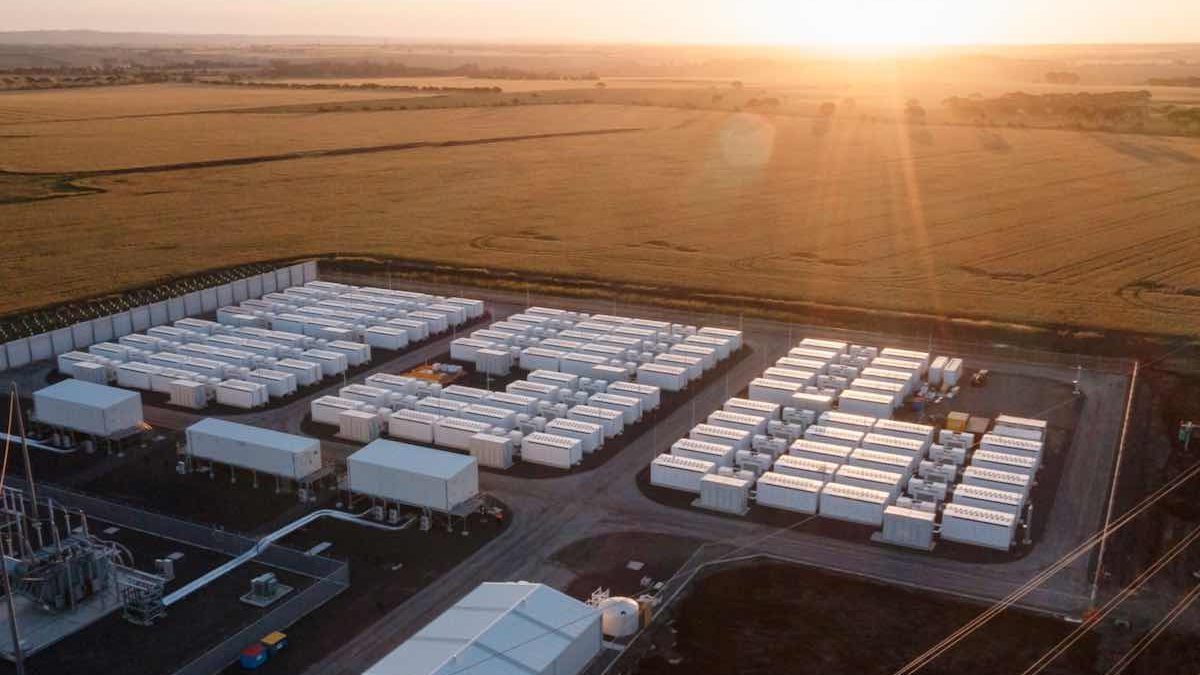It has been, and will be, one of the big debates of the green energy transition in Australia and many other places around the world – the balance between transmission and storage. Which will play the most important role in closing down fossil fuels and replacing them with wind and solar?
The reality is both are needed, but the question is to what scale. The new federal Labor government is putting its focus on a $20 billion “Rewiring the Nation” plan, designed to support many of the huge transmission lines that will criss-cross the countryside linking new wind and solar projects with demand centres.
Labor’s policy comes with a significant “community battery” plan, with up to 400 new installations scattered across the grid. But a new report argues that so much more needs to be done, and suggests a national renewable electricity storage target, along the lines of highly successful (and only just bipartisan) RET.
The REST, as Bruce Mountain from the Victorian Energy Policy Centre and his fellow researchers argue, is needed because the market signals are simply not there.
One reason is the absence of an environmental consideration in the National Electricity Market rules – which as we have reported in the past, sees utilities forced to invest in dirty diesel rather than storage projects if they want to recoup the money from customers.
The second reason is that the rules still haven’t caught up with the bevy of services that battery storage, for instance, can provide. Most of the existing batteries have made much of their money from the frequency control market (FCAS), but this is a shallow pool.
Many new batteries are counting on direct government support, through contracts or grants, but Mountain & Co argue that a storage market, a REST similar to the RET, is the most efficient outcome.
The final reason is that the storage cost requirements are significantly higher than the anticipated transmission spend, as big as that is.
According to the Australian Energy Market Operator’s Integrated System Plan, its 20 year blueprint, some $87 billion will need to be invested, some $75 billion of this in generation and storage.
To break that down further, the step change scenario assumes 200GW of wind and solar, and 59GW of storage, with an average duration of five hours.
But there is no market signal.
Mountain and his co-authors argue that a REST should be similar to the RET in that it issues traceable certificates, and is far more preferable to a capacity mechanism favoured by coal generators, because it would completely ignore the emissions factor, the biggest cost of a fossil fuel grid.
“How can a capacity mechanism structured within the NEM ever be credible when it excludes the biggest cost imposed by electricity production?” the authors write.
Mountain says the key will come down to the design, and to ensure it doesn’t exclude any particular storage technology, be it behind-the-meter (in homes and offices and industrial facilities) or mobile (electric vehicles), and nor should it discriminate on length of storage.
That’s because technologies are changing all the time, and the rules need to be set to encourage that.
“There will be pressure from various interest groups, and from technocrats and politicians, to prefer one technology over another or to have particular regard to some form of functionality (e.g. remote control),” the authors write.
“Such ‘fine tuning’ can quickly degenerate into a process of picking winners, which almost invariably turn out to be losers.” Mountain says the certificates should be based on capacity and dispatchability, and not on output.











